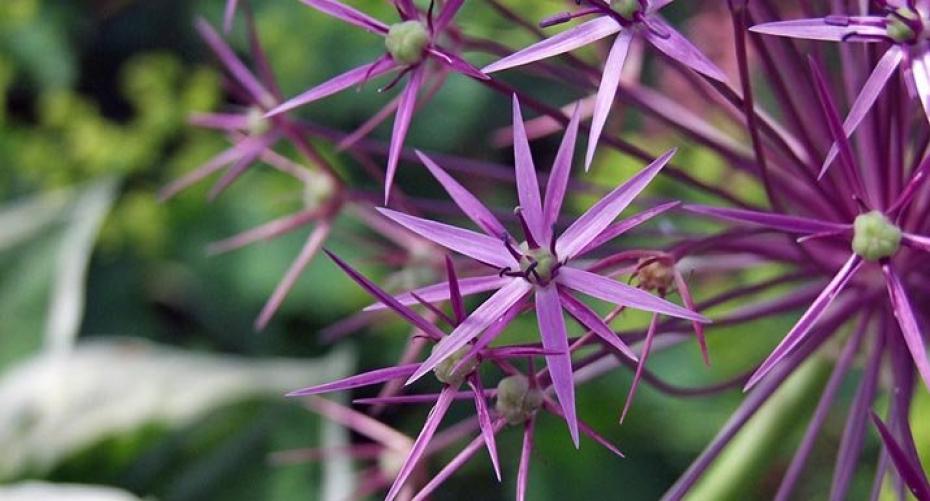Fill that gap in the border with a pot of colourful summer bulbs
Planting
- Plant as soon as the soil warms up; if you plant when the soil is too cold you run the risk of the bulbs rotting, and they won’t grow until temperatures increase.
- Choose a warm, sunny site.
- As a general rule plant to a depth of 3 times the height of the bulb.
- If you want a head start plant in containers and keep in a frost free greenhouse or conservatory.
- Plant them in cheap plastic pots then you can sink them into the herbaceous border where there is a gap; then lift at the end of the season and replace with spring flowering bulbs.
- They need really good drainage so use good loam based compost, such as John Innes No 2, for planting in containers. Incorporate a couple of handfuls of horticultural grit. Make sure you have plenty of drainage holes in the bottom of the container, cover with a piece of crock so that the holes don’t block with silt.
- If planting in the ground incorporate some horticultural grit and well-rotted organic matter.
- Clay soil will need to be improved with a large amount of horticultural grit and well-rotted organic matter to improve the drainage.

Aftercare
- Water after planting; don’t overwater otherwise they will rot.
- Tall species, such as gladioli, will need staking. Use one cane per plant, tied with soft string. If you have a lot grouped together you can use one of the circular plant supports.
- After flowering feed with a high potash fertiliser, such as Tomorite, to encourage the formation of next year’s flowers.
- Most of the summer bulbs are tender in the UK so will have to be lifted in autumn. As for the spring bulbs, keep taking off the spent flowers and lift the bulbs when the foliage has started to die back. Store somewhere dry, brush off the dried soil and cut off the dead foliage. Keep the bulbs somewhere cool and dry; make sure they can’t be eaten by mice. If they are stored too warm they will sprout prematurely.

Lilium martagon album (Turk's Cap)
Problems
- Generally trouble free but the usual slugs and snails can be a problem, so either take preventative measures or else go out at night with a torch and a bucket and pick them off.
- Aphids can also be troublesome but if you feed the birds they will usually clear them for you without having to resort to using insecticides. Otherwise just rub them off between finger and thumb.
- Mites can cause stunted growth and deformed flowers through feeding on the bulb. Destroy any infected bulbs and don’t re-plant the area with bulbs. When taking bulbs up at the end of summer check for any mite damage.
Varieties
- For sheer drama try growing the Tree Lily, which can reach a height of 2.5m (8’) over 2 growing seasons. They have a delicious scent and one bulb can produce a staggering 30 trumpet blooms. It has strong, sturdy stems so requires no staking. Planted somewhere warm, sunny and sheltered in well-draining soil it can be left in the ground over the winter.
- Oriental lilies are richly scented, whereas Asiatic lilies are usually scent-less but flower a little earlier then the Orientals.
- If you don’t like the huge brassy gladioli try growing the daintier Gladiolus (Acidanthera) murielae or G. byzantinus.
- Grow chives in the border; cut some for cooking and leave some to form flower heads.
- Try Allium christophii for a huge starburst of purple; it can reach a height of 60cm (24”) with the heads 20cm (8”) across.
For more information on how to enhance your outdoor living space just get in touch with our Outdoor Plant team here in store.


